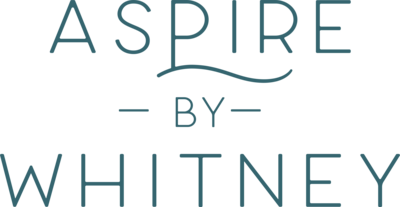Imagine gears clicking into place, every movement synchronized for optimal performance. That’s your body when exercise meets healthy eating.
In this dance between fitness and nutrition, each step counts. Physical activity gets your heart pumping while balanced meals fuel that momentum. It’s an enthralling ballet of wellness we often overlook but one with life-altering rewards waiting at the curtain call.
This journey won’t just help you build strong muscles or lose weight—it’ll boost your emotional health, revitalize everyday life, enhance athletic performance, even aid muscle regeneration after workouts! A promise of transformation worth striving for don’t you think?
Buckle up as we explore this captivating interplay further…together!
Understanding the Integrated Role of Physical Fitness and Nutrition
The harmony between physical fitness and nutrition can be compared to a well-rehearsed orchestra. Each section, or in our case, each lifestyle change plays its part in creating beautiful music – your optimal health.
To make sense of this symphony for wellbeing, we need to see how physical activity and healthy eating fit together. Exercise is like the rhythm keeping us moving while nutrition provides the melody that gives our bodies what they need.
Achieving optimal health isn’t about doing more burpees or eating only leafy greens (although those do help.). It’s about finding balance in every aspect: from incorporating vegetables into your meals for their rich nutrient profile to adopting an exercise routine you enjoy. Remember, it’s not just about weight loss but lifelong health.
Exploring the Relationship Between Physical Activity, Nutrition Habits, and Overall Well-being
In truth, regular physical activity coupled with a balanced diet contributes significantly towards overall well-being. The benefits aren’t limited merely to improved heart health or increased muscle mass; there are mental rewards too. A morning jog paired with a Greek yogurt breakfast could do wonders for both body positivity and mood elevation.
The impact goes deeper than surface level changes as these combined actions play an integrated role in achieving optimal health over time. They form two sides of the same coin—neither one more important than another when it comes down to building sustainable habits leading toward better life outcomes.
“Health is like money—we never have a true idea of its value until we lose it.” —Josh Billings
Setting attainable objectives, such as gradually incorporating more nutritious foods into our diet or increasing physical activity, can help sustain motivation and guarantee long-term achievement. Achievable milestones like adding more nutritious foods to our diet or increasing physical activity slowly can make a world of difference in maintaining motivation and ensuring long-term success.
Making Lifestyle Changes: Setting Realistic Goals
When it comes to making lifestyle changes, setting achievable goals for physical fitness and nutrition is key. To sustain the changes, it is essential to devise a balanced diet and exercise regimen that can be followed for an extended period.
You may wonder how to start this journey. The secret lies in starting small and building healthy habits over time. According to health guidelines, the best way is focusing on one thing at a time. Once you master one healthy habit, then introduce another.
Tracking Progress Towards Your Health Goals
To stay motivated during your health journey, tracking progress towards your goals can be an invaluable tool. This can aid in understanding what you’ve accomplished, pinpointing any weak spots that require extra attention, and adjusting your approach as needed for optimal health benefits.
A great strategy for goal setting is using SMART criteria (Specific, Measurable, Achievable, Realistic, Trackable). They provide a clear pathway towards achieving your desired outcomes while ensuring they are within reach.
The path to better health doesn’t have to feel like scaling Everest; instead think of it as climbing a hill—one step at a time. And remember—it’s not just about reaching the top but also enjoying the climb.
Nutrition Across Life Stages: From Childhood to Aging
Our nutritional needs evolve as we progress through life’s stages. It’s essential to adapt our dietary habits accordingly, from the growing years of childhood and adolescence to adulthood, where maintaining muscle mass becomes a priority.
Healthy nutrition habits for children and adolescents are vital in establishing lifelong health practices. These early eating patterns shape future food choices while ensuring adequate growth and development.
In adults, especially those leading an active lifestyle, balanced nutrition plays a significant role in maintaining muscle mass and optimizing exercise performance. An adult diet rich in protein aids in reducing muscle damage during physical activities and promotes recovery afterwards.
The Role of Nutrition In Promoting Lifelong Health In Older Adults
As we age further into our golden years, our metabolism slows down but the need for nutrient-rich foods remains crucial. Healthy aging is linked with reduced risk of chronic diseases such as heart disease or diabetes that can be managed by smart dietary intake.
- Eating fiber-rich fruits & vegetables reduce risks associated with heart health.
- Lean proteins aid maintenance of bone density & muscular strength.
- Adequate hydration keeps skin healthy & assists kidney function.
Maintaining a nutritious diet throughout all life stages isn’t just about longevity; it’s also about quality of life. Remember – the food you consume and having a healthy diet has far-reaching consequences, impacting each and every cell in your organism.
Healthy Food Choices for a Balanced Diet
For a balanced diet, it’s not only important to consider the quantity of food we consume, but also its quality. Including nourishing foods like sweet spinach, kale and sweet potatoes in our diets is essential for ensuring we get enough of the vital nutrients, which improves our physical performance.
Leafy greens such as spinach or kale are nutrient powerhouses packed with vitamins A, C, K and many B vitamins. They’re also rich in dietary fiber which supports digestive health. Sweet potatoes aren’t just tasty; they’re great sources of vitamin A, fiber and potassium too.
Besides these colorful veggies, let’s not forget protein-rich foods – one standout being Greek yogurt. This creamy delight packs a punch when it comes to protein content which MyPlate suggests should make up one quarter of our plates. It’s not only filling but helps in muscle regeneration after exercise or working out.
- Diverse food choices: No single food item can give us all the nutrients we need for optimal health so diversity is key. Include different types of fruits, vegetables, proteins and grains in your diet.
- Nutrient deficiencies: Addressing nutrient deficiencies through diverse food choices ensures you get a wide range of vital micronutrients necessary for bodily functions including heart health.
Incorporating simple nutrition habits like having at least one fruit or vegetable per meal makes sure half your plate stays full with these nutritious foods – an easy tip suggested by MyPlate guidelines.
Making smart decisions about what goes on our plate doesn’t have to be complex nor does it require drastic changes overnight. Small steps towards healthier eating today lead us closer towards lifelong good health tomorrow and reaching our long-term goals.
Behavior Change and Maintaining Healthy Habits
Making a lifestyle change is no small feat. It requires more than a simple resolution to improve dietary habits or increase physical exercise; it necessitates altering one’s behavior. But don’t be discouraged. Here are some strategies that can help you stay motivated.
Overcoming Challenges in Maintaining Healthy Habits
The journey towards a healthier life often has its hurdles, but these obstacles aren’t roadblocks—they’re opportunities for growth. Let’s tackle the first hurdle: getting started by setting small goals. Starting small helps us focus on one thing at a time and reduces overwhelm.
You might begin with an easy goal like adding leafy greens to dinner three times per week or taking short walks after meals instead of sitting down immediately.
Research shows setting SMART goals—Specific, Measurable, Achievable, Realistic and Trackable—can keep us focused as we navigate our health journeys.
To maintain motivation when progress seems slow, tracking progress can be immensely helpful. Whether it’s writing down workouts in a journal or using fitness apps to monitor food intake and physical movement—it all counts.
Next comes dietary choices – opting for nutritious foods over processed ones may seem daunting initially but incorporating variety into your diet makes this transition easier but it takes time.
By making conscious food choices such as including sweet potatoes for their high antioxidant intake or Greek yogurt packed with protein—we’re not only nourishing our bodies but also contributing towards lifelong health.
Remember that changes take time so if there are slip-ups along the way—don’t sweat it. Consistency trumps perfection every time when it comes to creating sustainable lifestyle changes.
So, let’s make those smart decisions today for a healthier, happier tomorrow. And remember—you’ve got this.
Weight Management Through Physical Fitness and Nutrition
The journey to a healthier you is paved with two major factors: physical fitness and nutrition. They go together like two peas in a pod, both playing an indispensable part in attaining ideal wellness.
Fitness isn’t just about getting your heart rate up or building muscle mass. It’s also about fueling your body properly to sustain that activity level. You wouldn’t run a car without gas, right? That’s where nutrition comes into play.
Achieving a Healthy Weight through Diet and Exercise
Maintaining a healthy weight hinges on creating the perfect balance between calories consumed and those burned off during exercise. A slice of pizza might look tempting but consider this – it takes around 40 minutes of jogging just to burn it off, so maybe just opt for a healthy snack instead.
MyPlate offers some great insights for portion control; half our plates should be fruits and vegetables, one quarter protein, another quarter grains. Think about portion control. Now picture that next time you’re tempted by an extra helping of mashed potatoes.
The Connection Between Physical Fitness, Nutrition, And Weight Loss
We all know someone who seems to eat whatever they want yet never gains weight. Well here’s their secret: they likely have higher levels of physical activity offsetting those calorie bombs.
Remember The Physical Activity Guidelines for Americans, recommending at least 150 minutes of moderate-to-vigorous exercise per week? It sounds like much but break it down – we’re talking less than 25 minutes a day.
So, as we embark on our health journey let’s remember the magic equation: physical fitness + balanced nutrition = a healthier you. It’s not just about trying to eat better for a brief period; it’s about making changes that last and better overall lifestyle choices.
FAQs in Relation to How Physical Fitness and Nutrition Work together to Create Positive Lifestyle Change
How do physical fitness and nutrition go together?
Nutrition fuels your workouts, aids recovery, and boosts performance. Physical fitness helps you use the nutrients efficiently for energy and muscle growth.
How can nutrition and physical fitness play a big role in performance and lifestyle?
A balanced diet provides energy for exercise while staying active maintains body functions. Together they enhance mood, productivity, and health span – transforming your lifestyle.
What is the relationship between fitness and healthy lifestyle?
Fitness contributes to heart health, mental wellness, and immune strength—elements of a healthier life. A fit routine fosters habits that help maintain wellbeing long-term.
How can physical fitness improve your lifestyle?
Maintaining an active routine enhances mental clarity and reduces stress levels, which leads to better sleep quality—all vital elements of improved living conditions.
Conclusion
So, we’ve explored how exercise and nutrition work together to create positive lifestyle change. We’ve uncovered the magic behind their synergy—how they’re like a well-oiled machine that works best in harmony.
You now know it’s not just about weight loss or muscle mass—it’s also about mental health, heart health, even reducing risk of chronic diseases such as cardiovascular disease and others. You understand how achievable goals and SMART planning can help you maintain these healthy habits long term to improve health conditions.
We’ve discovered foods for muscle repair and the role of hydration in overall wellness. Remember, high nutrient greens, sweet potatoes…even Greek yogurt are your allies on this journey for desirable health outcomes!
The take-home message? Start small but aim high! It might be tough at first but remember—the greater benefits lie ahead. Your commitment today is your lifelong health tomorrow!







